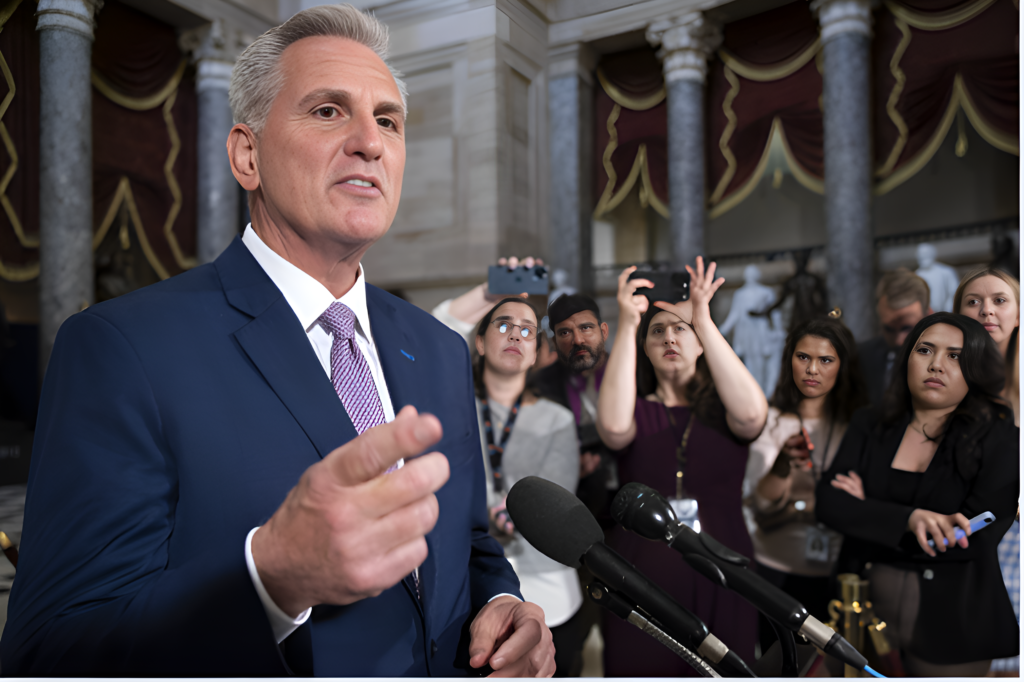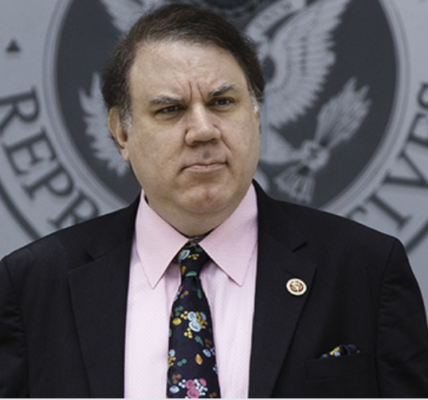
Kevin McCarthy has always had an affinity for American history. The portraits of figures like Abraham Lincoln and Ronald Reagan that adorned his Capitol Hill office, and the frequent references to past events in his speeches, are just a few of the ways McCarthy has positioned himself within the larger narrative of the nation’s story. A self-professed history buff, he even frequently joked about the reproduction of Washington Crossing the Delaware in his conference room—a story he retold so often it became a punchline. But now, six months after his ouster as Speaker of the House, McCarthy is attempting to rewrite his own history.
At 59, still relatively young in the world of octogenarian politicians, McCarthy knows it’s likely that the first line of his obituary will forever read: the first speaker ever removed from office. And while that may be an inescapable reality, McCarthy is intent on shaping how future generations will remember that moment—and the tumultuous months he spent wielding the gavel.
On Tuesday, McCarthy took his rebranding efforts to Georgetown University for an event titled “How Strong Is Our Democracy? With Kevin McCarthy.” The event itself reflected McCarthy’s desire to position himself as a defender of American democracy during his time in public service. In front of a modest crowd of around 100 students, McCarthy sat down with former Democratic operative Mo Elleithee, now a Georgetown professor, to discuss the state of democracy in America.
Despite the event’s premise, McCarthy’s delivery suggested a lack of urgency that stood in stark contrast to the dire warnings from both sides of the political spectrum about the future of American democracy. McCarthy spoke in platitudes about media fragmentation, echo chambers, and the partisanship plaguing modern politics. He lamented the loss of objective news and how media outlets, increasingly tailored to ideological preferences, distorted public understanding. Yet, when McCarthy had to lay blame, he attempted to remain above the fray, seemingly detached from the partisan struggles he had been immersed in for years.
He condemned the Capitol insurrection of January 6, but his critique never ventured into a deeper exploration of those who incited it, such as former President Trump. McCarthy’s version of events painted a broad stroke of bipartisan blame, a tactic common in the current political climate, though one that heavily favored the GOP. He even suggested that the Democrats’ election denialism was just as dangerous as the Republican version—a statement he extended to his own actions in 2020. McCarthy defended his controversial vote against certifying the 2020 election results in Arizona and Pennsylvania, framing it as a procedural objection rather than a challenge to the election itself. He argued that his position had been based on concerns about changes to voting procedures during the COVID-19 pandemic—an argument that seemed more about political theater than a genuine desire to reverse the election results.
McCarthy also reflected on his relationship with Trump, recounting a now-famous lunch at Mar-a-Lago shortly after Trump’s second impeachment. McCarthy cast the visit as a simple act of friendship, stating that he wanted to support Trump during a tough time. McCarthy’s retelling—replete with humorous anecdotes about Trump questioning whether he had leaked news of the visit—illustrated his approach to managing the volatile relationship with the former president. However, McCarthy glossed over the reality that his political survival often hinged on appeasing Trump, a dynamic that became evident during his ouster as Speaker.
While McCarthy’s storytelling was lighthearted, it also revealed a man who seemed resigned to the political forces he had once wielded. He was diplomatic when asked about Trump’s more controversial moments, such as the former president’s involvement in the fake electors scheme or his inflammatory rhetoric on immigration. In each case, McCarthy either denied knowledge or deflected responsibility, positioning himself as a mere bystander rather than an active participant in the more extreme elements of Trump’s presidency.
But when it came to his own ouster as Speaker, McCarthy could not resist casting blame on others, particularly Rep. Matt Gaetz, whom he accused of undermining him over a personal vendetta. McCarthy framed his removal as a betrayal by the Democratic Party and a consequence of bad faith actions within his own ranks.
For the students at Georgetown, McCarthy’s rebranding was largely successful. Many of them, unsure of what to expect from a Republican leader, found McCarthy to be personable, funny, and engaging. One junior from Connecticut, despite identifying as a Democrat, left the event with a more favorable view of McCarthy, impressed by his ability to understand diverse viewpoints. But while McCarthy may have won over some of the room, his legacy remains a work in progress.
His attempt to reframe his tenure and legacy has taken him to other prominent institutions, including a recent appearance at Harvard Kennedy School. At both events, McCarthy repeated similar talking points—an indication that, as he seeks to rewrite his political history, he is intent on crafting a narrative that serves his personal ambitions, as well as his vision of American democracy.
History, however, is a slippery thing. The passage of time often transforms heroes into villains and vice versa. In McCarthy’s case, whether future generations view him as a champion of democracy or a footnote in the era of Trump will depend on the lasting impressions of his actions, both during and after his time as Speaker.
In the end, it may not be his portrait in the Speaker’s lobby that defines McCarthy’s place in history, but how he is remembered by those who look back at his career. As one Republican colleague once remarked, McCarthy’s main concern was always whether his portrait would be hung beside those of his predecessors. But if McCarthy’s efforts to shape his legacy succeed, his name might someday be remembered for more than just a portrait—it might be the embodiment of a complex and contradictory era in American politics.





